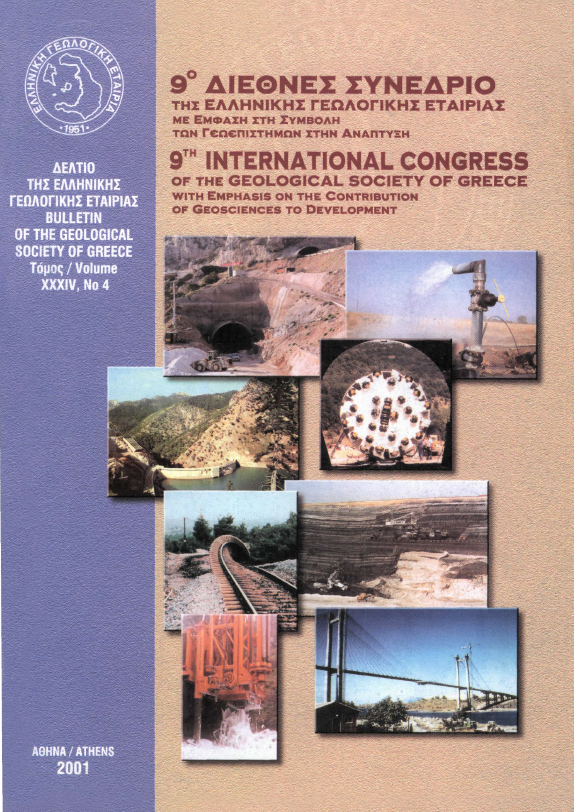ANISOTROPY OF MAGNETIC SUSCEPTIBILITY (AMS) IN VOLCANIC FORMATIONS: THEORY AND PRELIMINARY RESULTS FROM RECENT VOLCANICS OF BROADER AEGEAN.
Abstract
The anisotropy of magnetic susceptibility (AMS) is a physical property of rocks widely used in petrofabric studies and other applications. It is based on the measurement of low-field magnetic susceptibility in different directions along a sample. From this process several scalar properties arise, defining the magnitude and symmetry of the AMS ellipsoid, along with the magnetic foliation, namely the magnetic fabric. Imaging the sense of magma flow in dykes is an important task for volcanology; the magnetic fabric provides a fast and accurate way to infer this flow direction. Moreover, the AMS technique can be used in order to distinguish sills and dykes, a task that is almost impossible by using only field observations. Finally in the case of lava flows, the method can be applied to define the local flow conditions and to indicate the position of the "paleo" source region. However, this technique is quite new in Greece. Some preliminary results from volcanic formations of continental Greece and Southern Aegean are presented (Aegina, Almopia, Elatia, Gavra, Kos, Patmos, Samos, Samothraki and Santorini).
Article Details
- How to Cite
-
Zananiri, I., & Kondopoulou, D. (2004). ANISOTROPY OF MAGNETIC SUSCEPTIBILITY (AMS) IN VOLCANIC FORMATIONS: THEORY AND PRELIMINARY RESULTS FROM RECENT VOLCANICS OF BROADER AEGEAN. Bulletin of the Geological Society of Greece, 36(3), 1308–1315. https://doi.org/10.12681/bgsg.16474
- Section
- Geophysics

This work is licensed under a Creative Commons Attribution-NonCommercial 4.0 International License.
Authors who publish with this journal agree to the following terms:
Authors retain copyright and grant the journal right of first publication with the work simultaneously licensed under a Creative Commons Attribution Non-Commercial License that allows others to share the work with an acknowledgement of the work's authorship and initial publication in this journal.
Authors are able to enter into separate, additional contractual arrangements for the non-exclusive distribution of the journal's published version of the work (e.g. post it to an institutional repository or publish it in a book), with an acknowledgement of its initial publication in this journal. Authors are permitted and encouraged to post their work online (preferably in institutional repositories or on their website) prior to and during the submission process, as it can lead to productive exchanges, as well as earlier and greater citation of published work.









